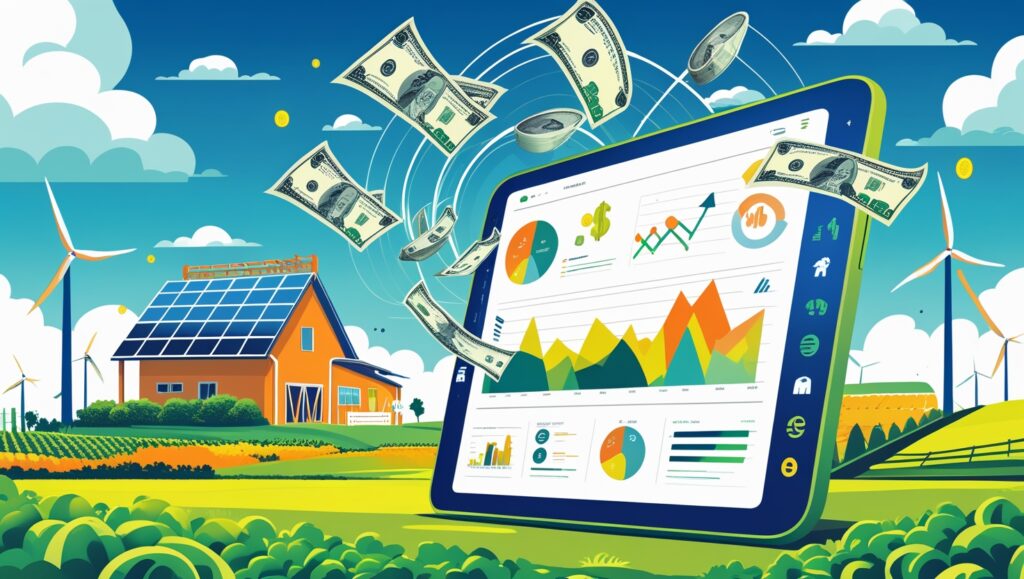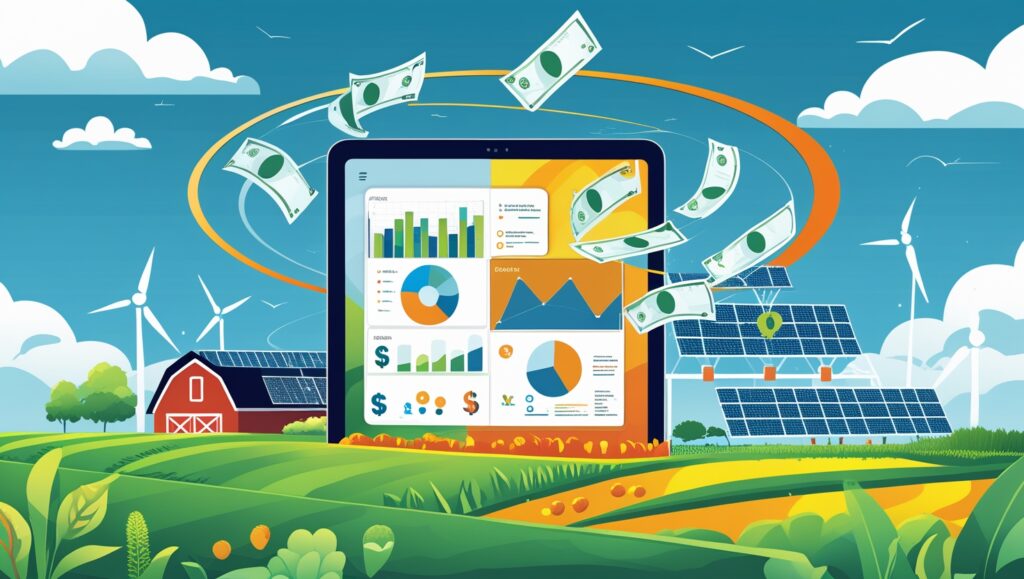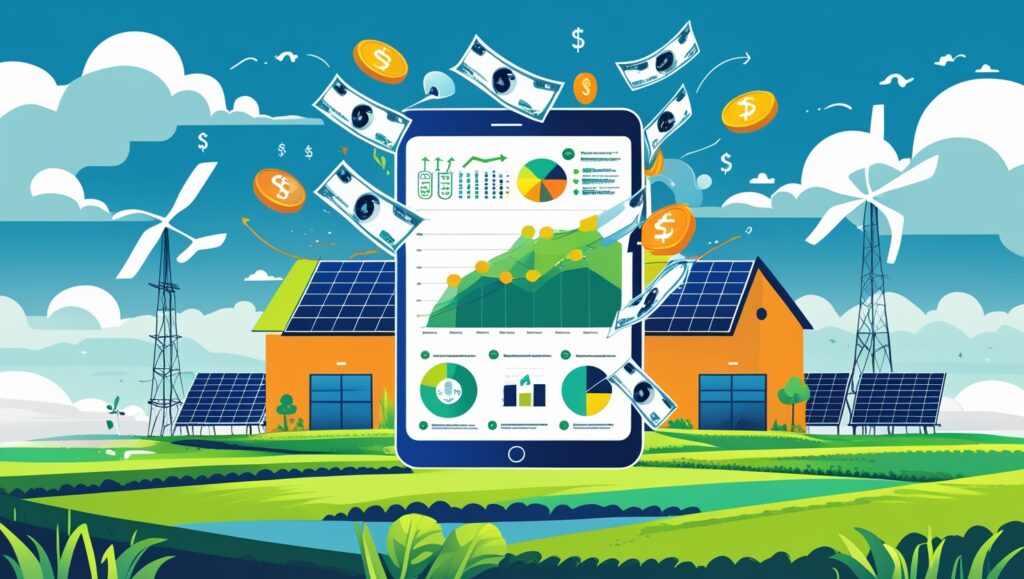Digital Farming: How to Leverage Technology to Earn Money in Agriculture

The agricultural industry is undergoing a transformative shift thanks to advancements in digital technology. Digital farming, also known as smart farming or precision agriculture, leverages data, automation, and artificial intelligence (AI) to optimize farming practices, increase productivity, and boost profitability. Whether you’re a small-scale farmer or part of a large agricultural enterprise, digital farming offers numerous ways to earn money and make your farming operation more efficient.
Understanding Digital Farming
Digital farming involves integrating advanced technologies into traditional agricultural practices. This can include drones, sensors, GPS technology, and farm management software to monitor crops, livestock, and soil conditions in real time. The goal is to make data-driven decisions that improve crop yields, reduce costs, and minimize environmental impact.
By adopting digital farming, farmers can monitor every aspect of their operations, from planting and irrigation to pest control and harvesting. This not only saves time but also enhances precision, ensuring that resources are used efficiently.
Ways to Earn Money Through Digital Farming
- Increased Crop Yields and Productivity
One of the primary ways digital farming boosts income is by enhancing crop yields. Precision agriculture tools enable farmers to apply the right amount of water, fertilizers, and pesticides, leading to healthier crops and higher production rates.
How to Implement:
- Use drone technology to survey fields and detect problem areas.
- Install IoT (Internet of Things) sensors to monitor soil moisture and nutrient levels.
- Apply AI algorithms to analyze data and predict the best planting and harvesting times.
- Cost Reduction and Resource Optimization
Digital tools allow farmers to reduce waste and lower production costs by optimizing the use of resources. Precision application of inputs such as water and fertilizers ensures that nothing goes to waste.
How to Implement:
- Use GPS-guided machinery for planting and irrigation.
- Implement automated systems for livestock feeding and health monitoring.
- Invest in variable-rate technology (VRT) for site-specific crop management.
- Selling Data and Analytics
Data is a valuable asset in digital farming. By collecting and analyzing data from their operations, farmers can sell this information to agricultural companies, research institutions, or government agencies looking to improve agricultural practices.
How to Implement:
- Partner with agritech companies to share data.
- Develop software that aggregates farm data and offers insights to other farmers.
- Monetize drone surveys and field mapping services.

- Diversification of Revenue Streams
Digital farming opens up opportunities to diversify income streams. Farmers can offer agritech consulting, develop apps or software for farm management, or even rent out their digital tools and equipment to neighboring farms.
How to Implement:
- Start a consulting service to help other farmers implement digital farming techniques.
- Develop mobile apps that provide weather forecasts, pest control alerts, or crop management tips.
- Rent out drones or automated equipment for a fee.
- Direct-to-Consumer Sales
By using digital platforms, farmers can bypass intermediaries and sell their products directly to consumers. E-commerce websites and social media allow farmers to market and distribute produce, dairy, and other products directly to households.
How to Implement:
- Set up an online store to sell fresh produce or packaged goods.
- Use social media to market products and engage with customers.
- Partner with delivery services to distribute goods locally.
- Livestock Management and Productivity
Digital farming isn’t limited to crop production. Livestock farmers can use wearable technology and automated feeding systems to monitor animal health, track movement, and optimize breeding practices.
How to Implement:
- Use RFID (Radio Frequency Identification) tags to track livestock.
- Implement automated feeding systems that dispense feed based on each animal’s needs.
- Monitor livestock health with sensors that detect illness early.
- Sustainable Farming and Carbon Credits
Sustainability is a growing concern in agriculture. Digital farming practices that reduce carbon emissions or promote soil health can generate carbon credits, which can be sold to companies aiming to offset their environmental impact.
How to Implement:
- Adopt regenerative agriculture practices and track their impact using digital tools.
- Partner with carbon credit programs that reward sustainable farming.
- Use blockchain technology to verify and trade carbon credits.
- Precision Livestock Farming
Precision livestock farming (PLF) uses digital technology to monitor the health and productivity of livestock. This can lead to healthier animals, increased production, and higher profits.
How to Implement:
- Use thermal cameras to detect heat stress in animals.
- Install automated milking systems.
- Utilize AI to monitor animal behavior and detect health issues early.
Benefits of Digital Farming
- Higher Efficiency: Automation and data analysis allow farmers to make informed decisions, reducing guesswork and maximizing output.
- Reduced Environmental Impact: By using resources more efficiently, digital farming helps reduce water usage, chemical application, and soil degradation.
- Improved Profit Margins: Increased yields and lower costs translate directly to higher profits.
- Risk Mitigation: Real-time data and predictive analytics help farmers anticipate problems and address them before they escalate.

Final Thoughts
Digital farming represents the future of agriculture. By embracing technological advancements, farmers can unlock new revenue streams, increase productivity, and contribute to a more sustainable agricultural landscape. Whether you’re interested in increasing crop yields, managing livestock, or selling data, digital farming offers countless opportunities to earn money and thrive in the evolving agricultural industry.






